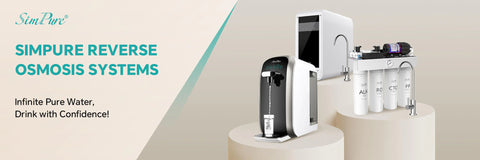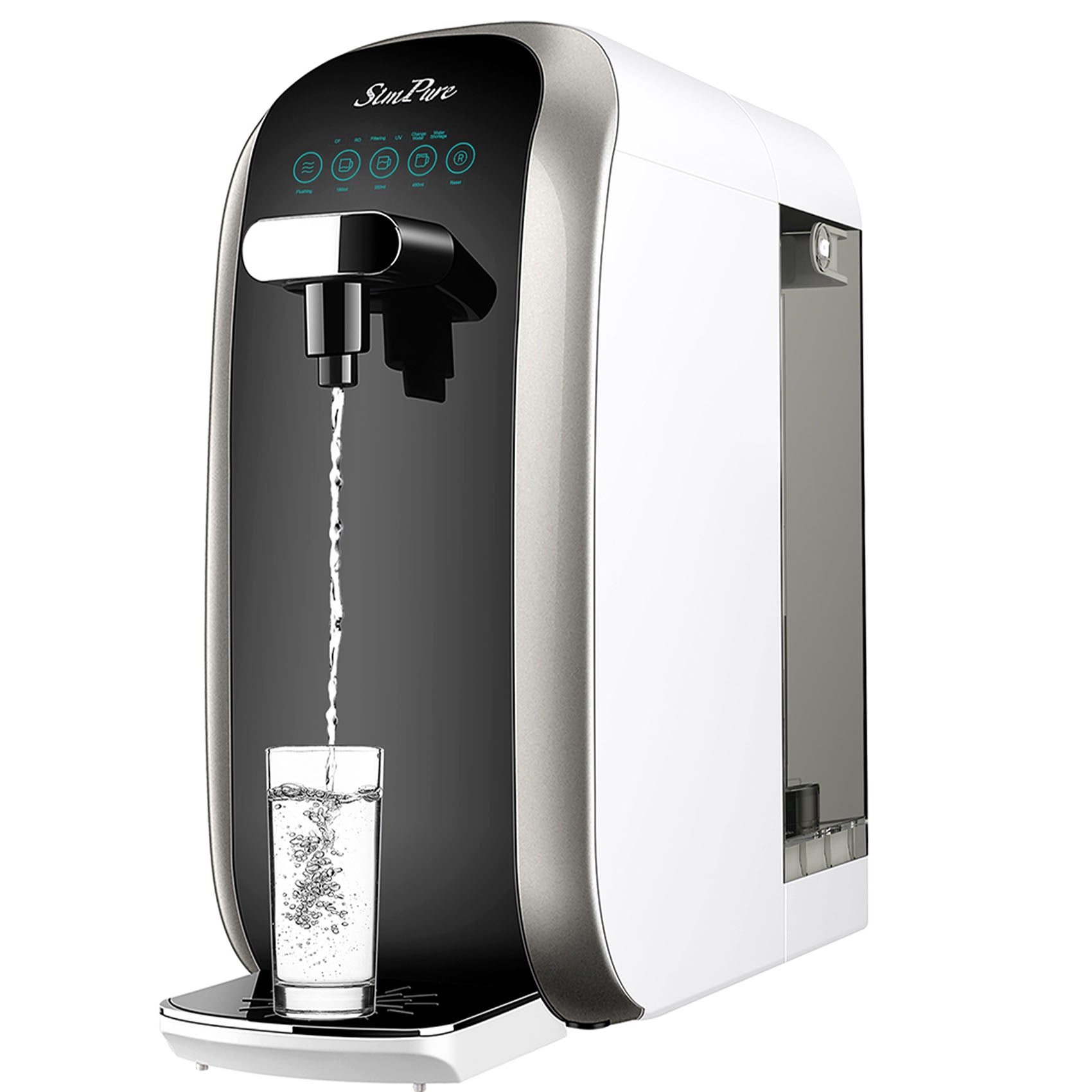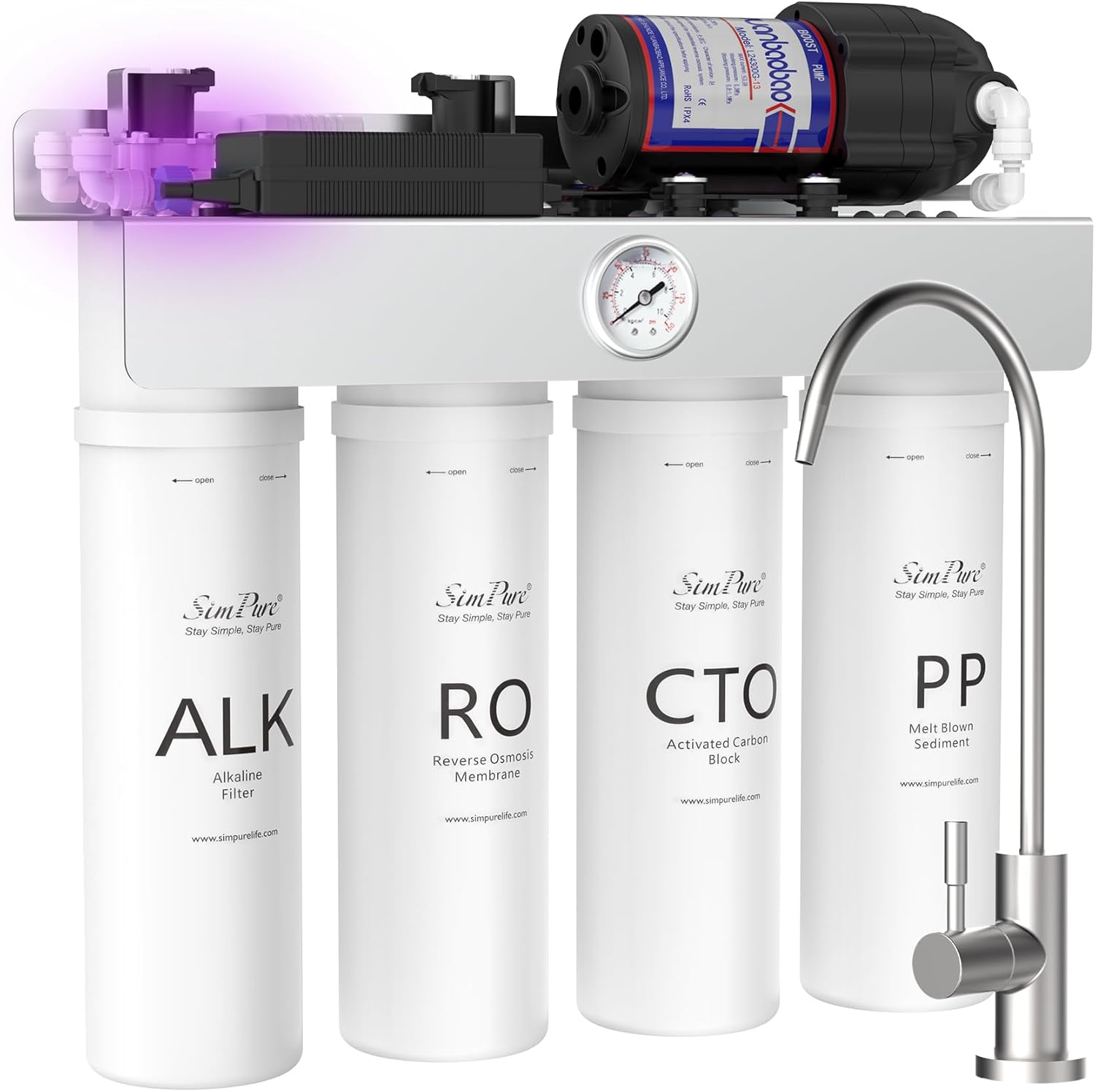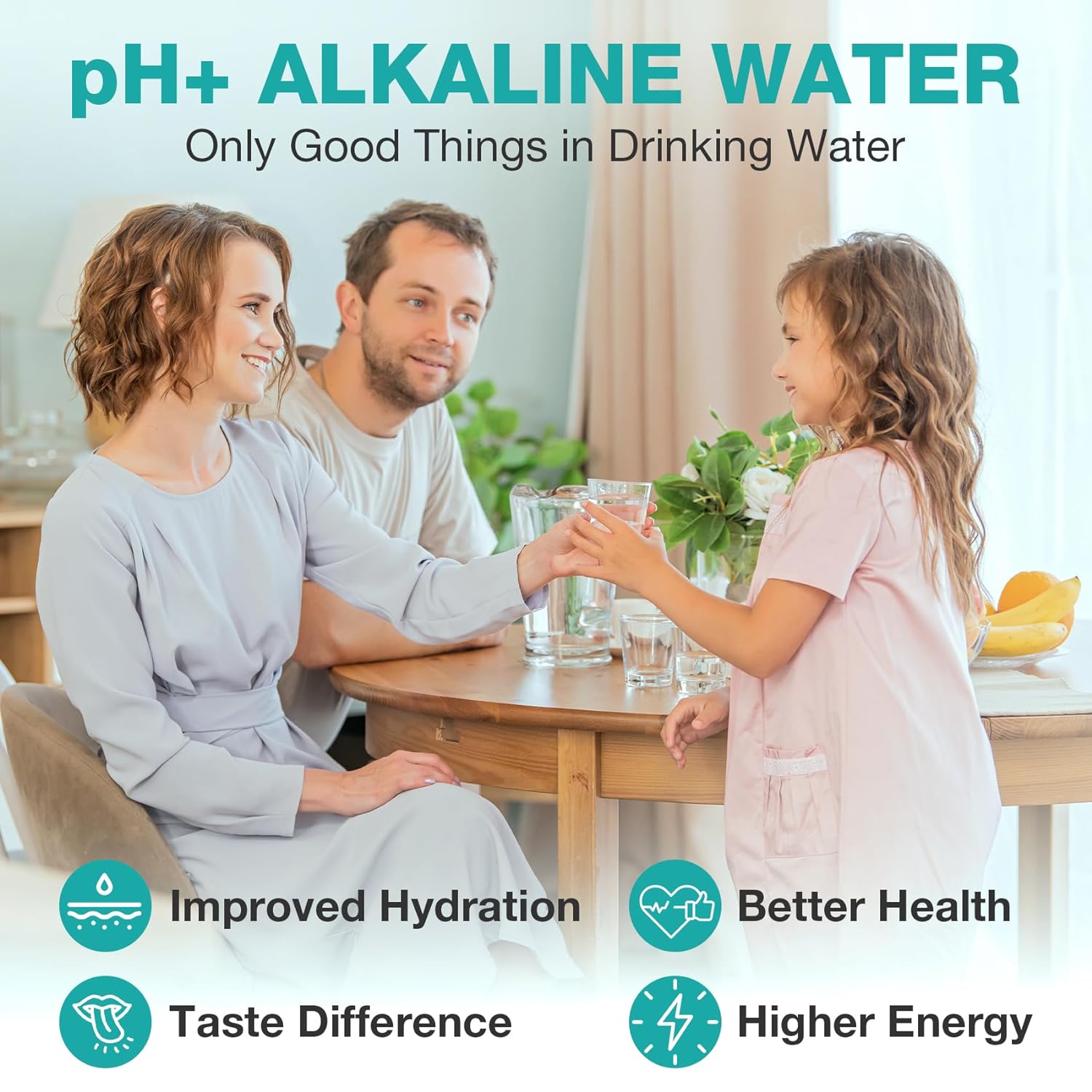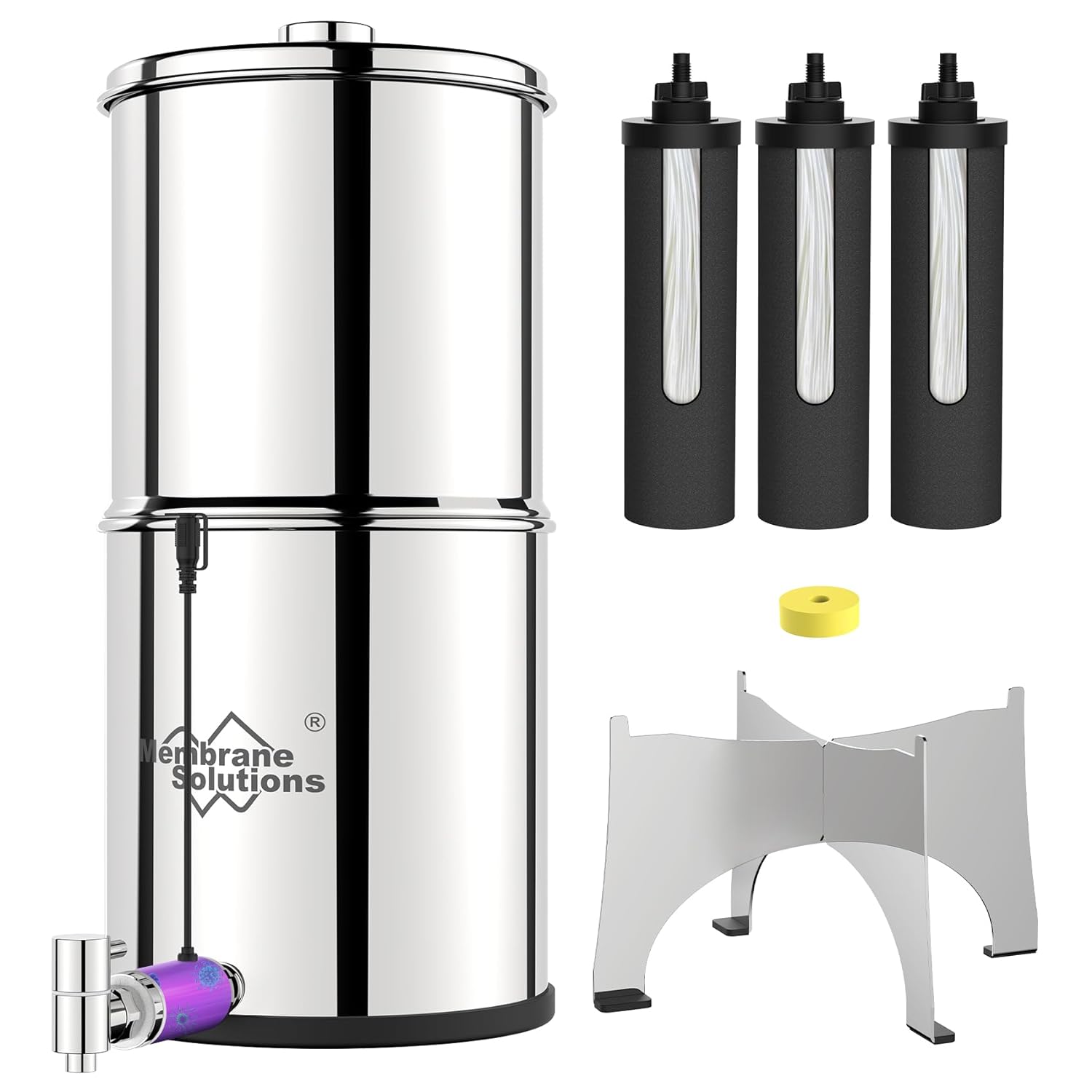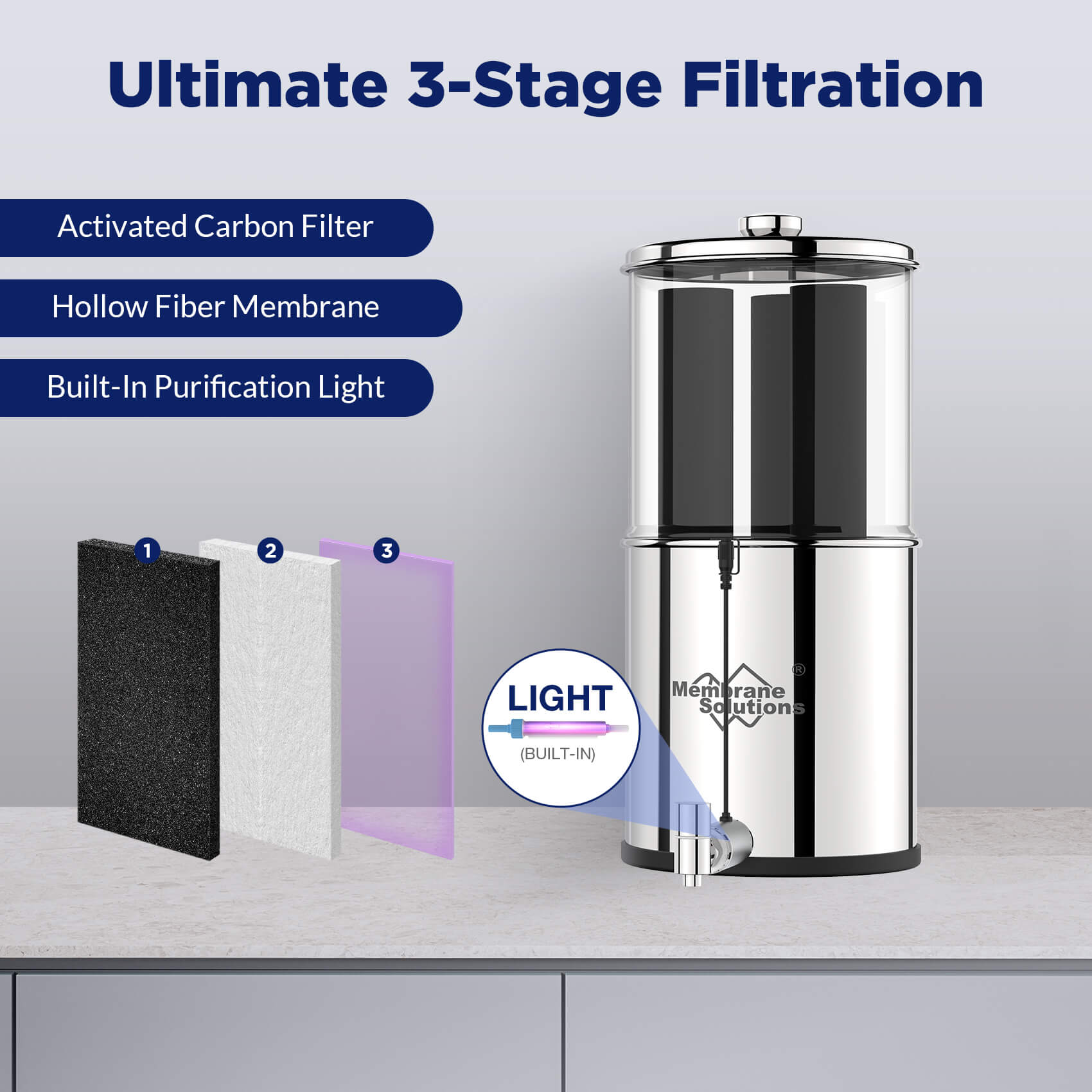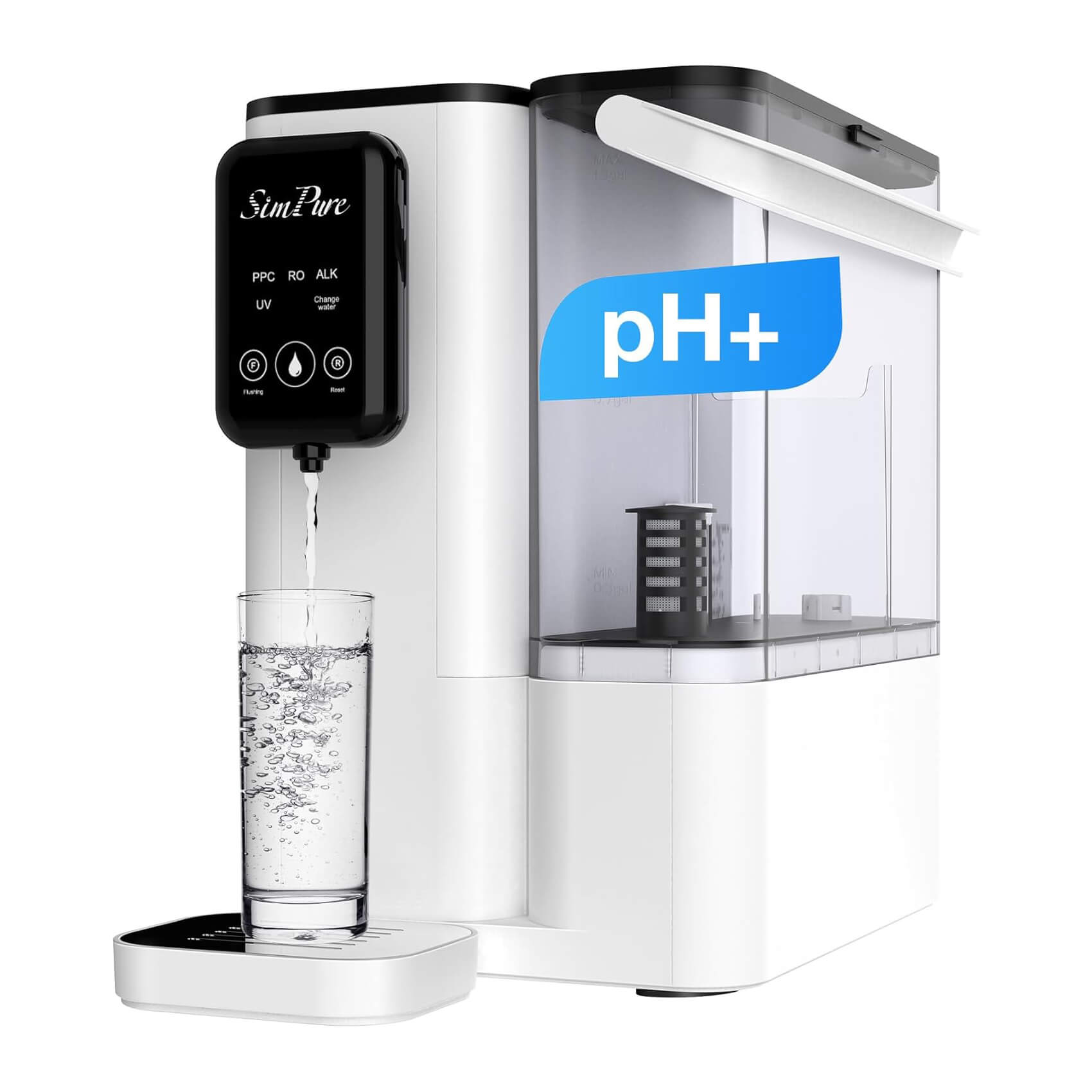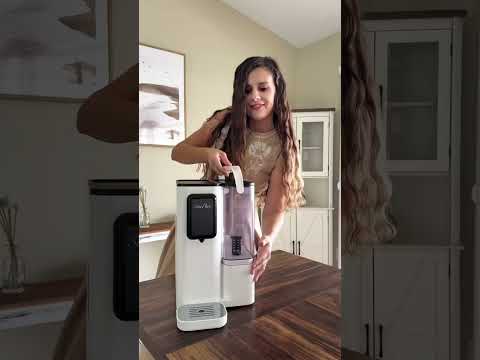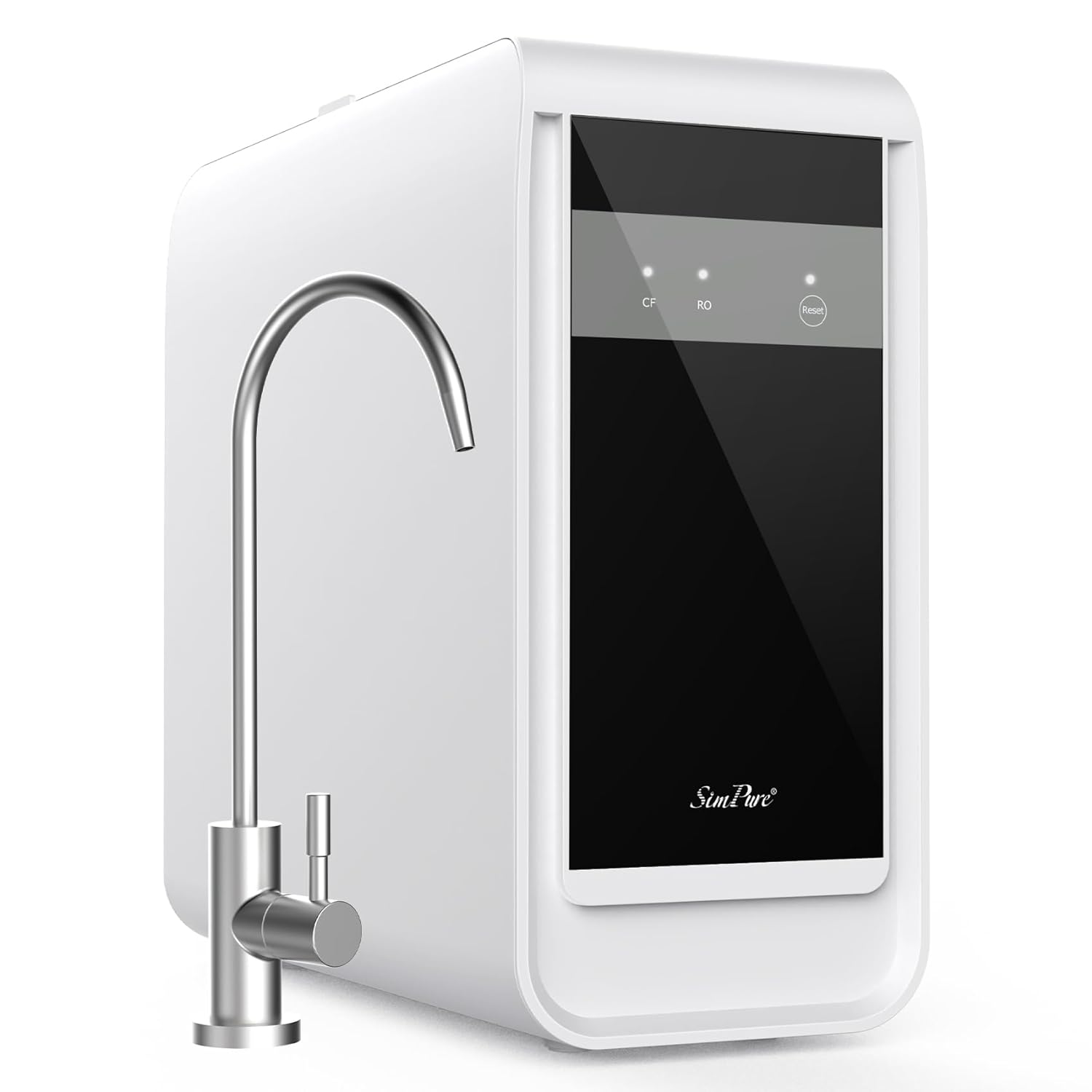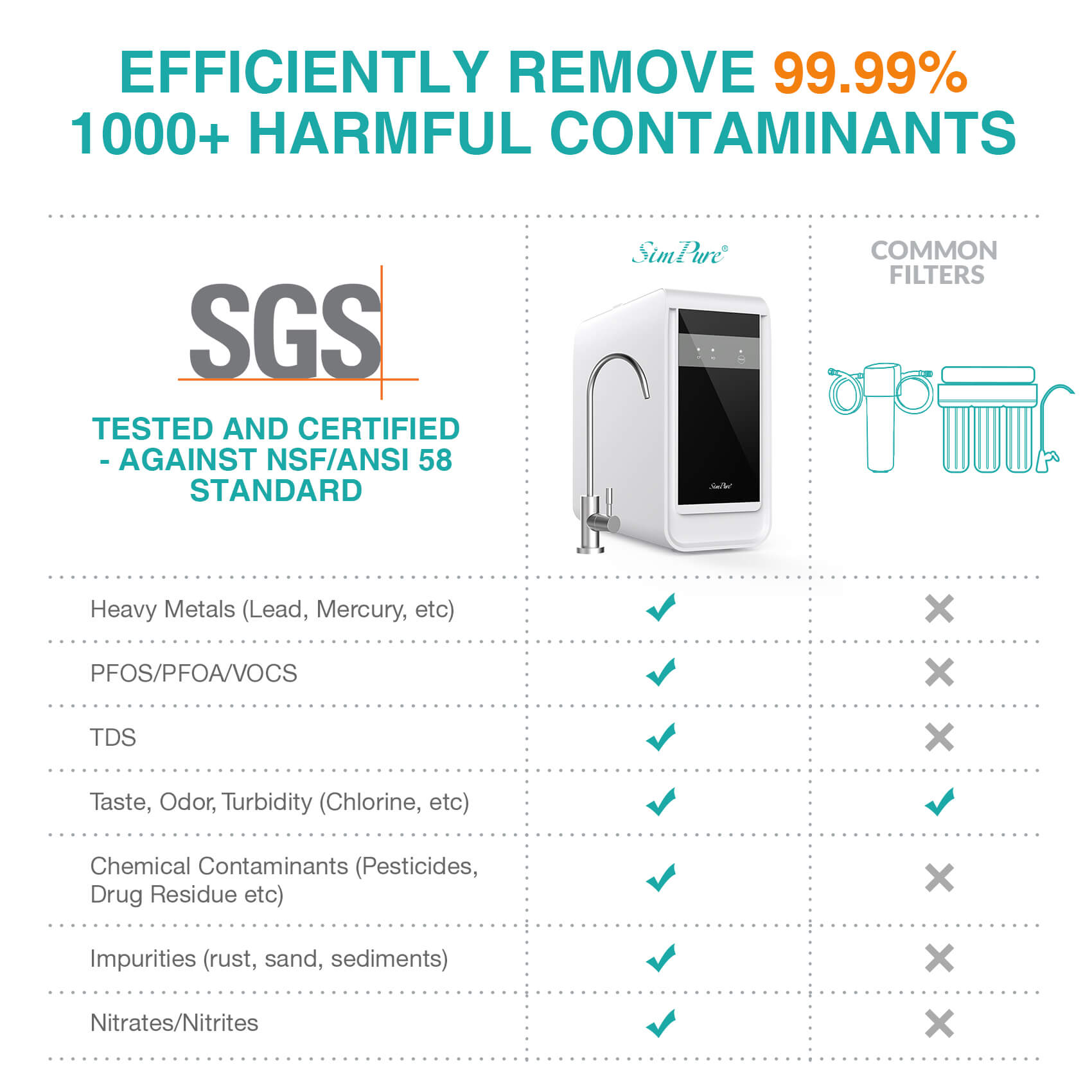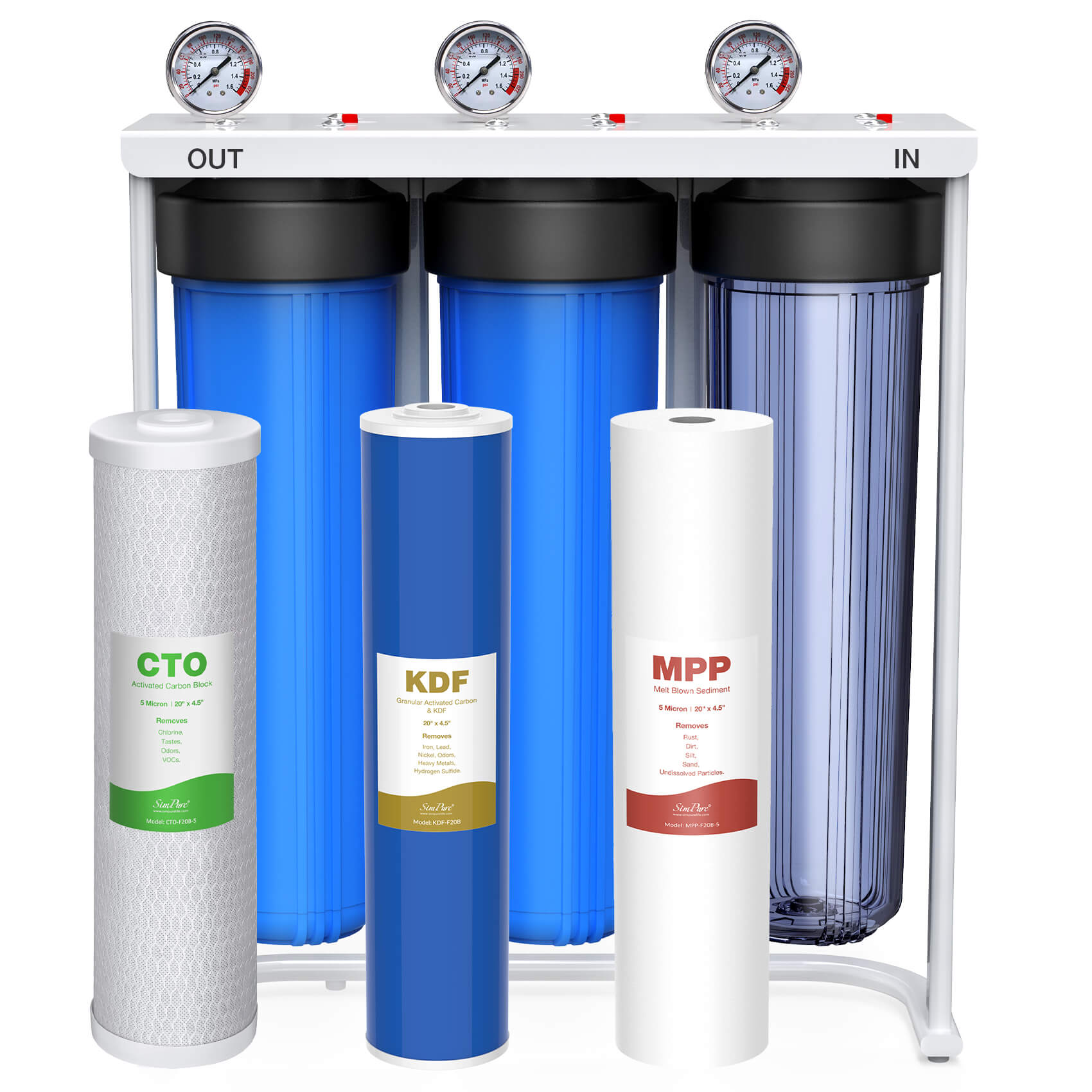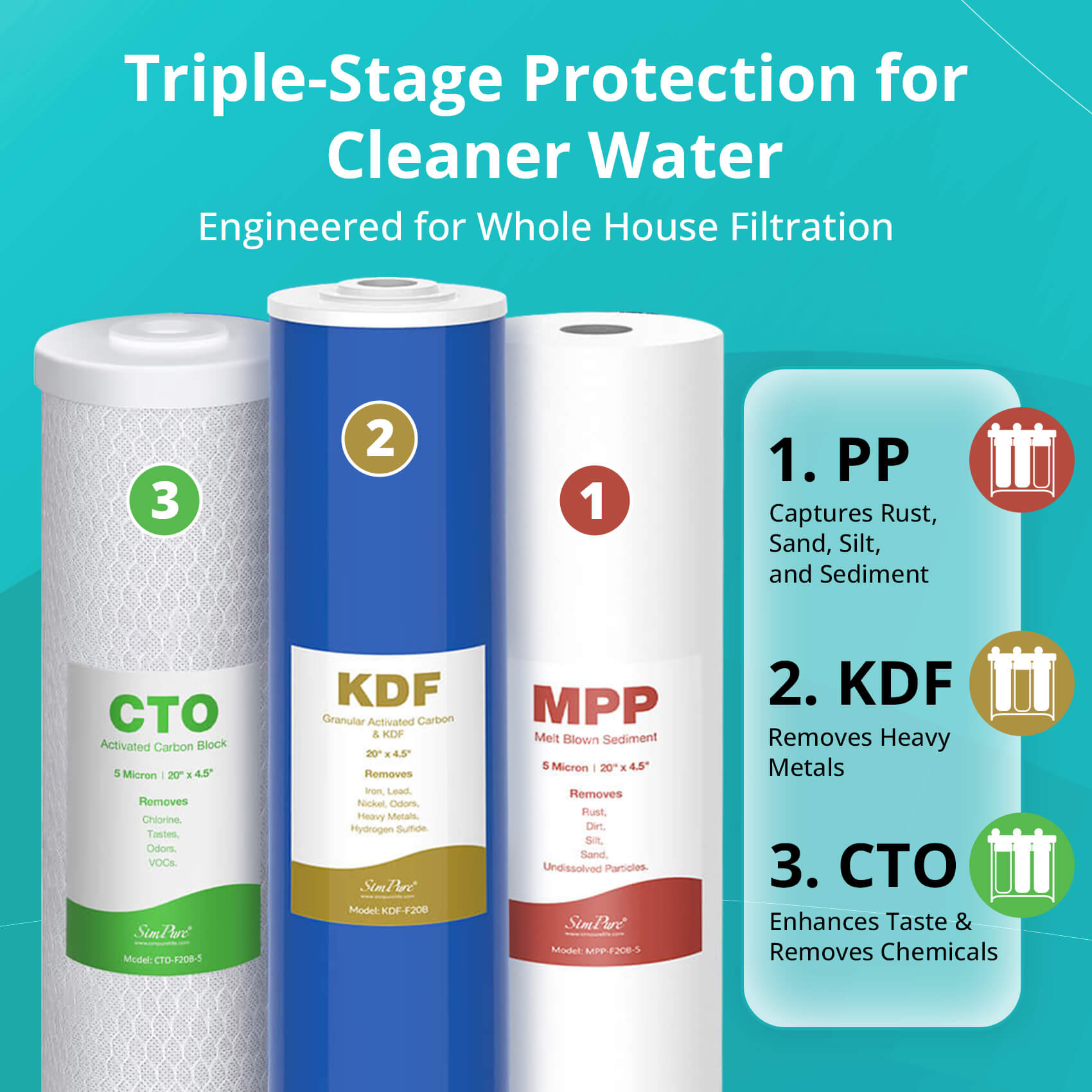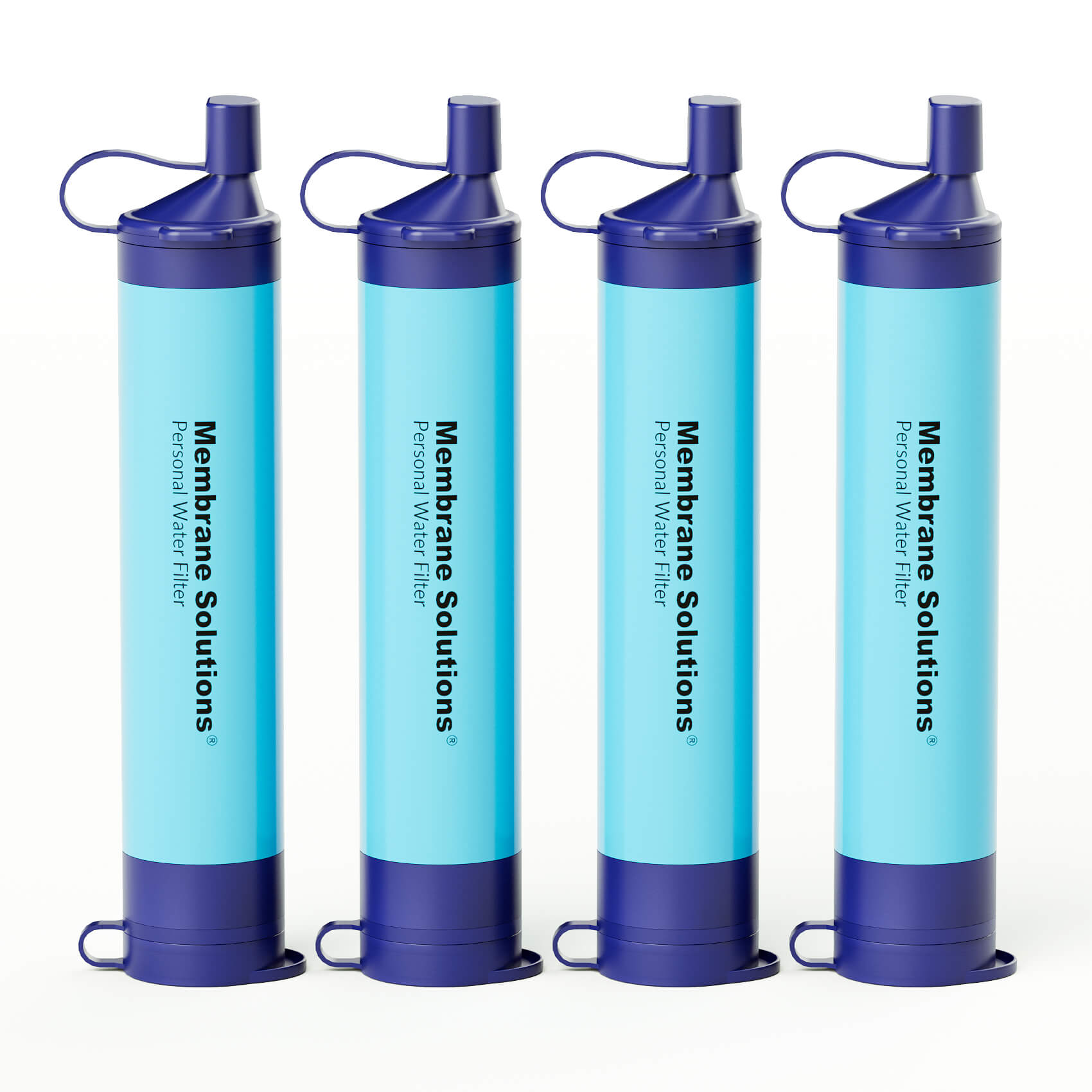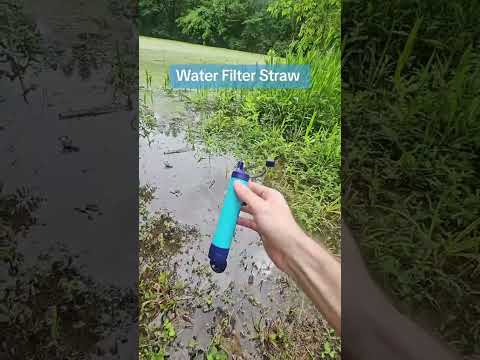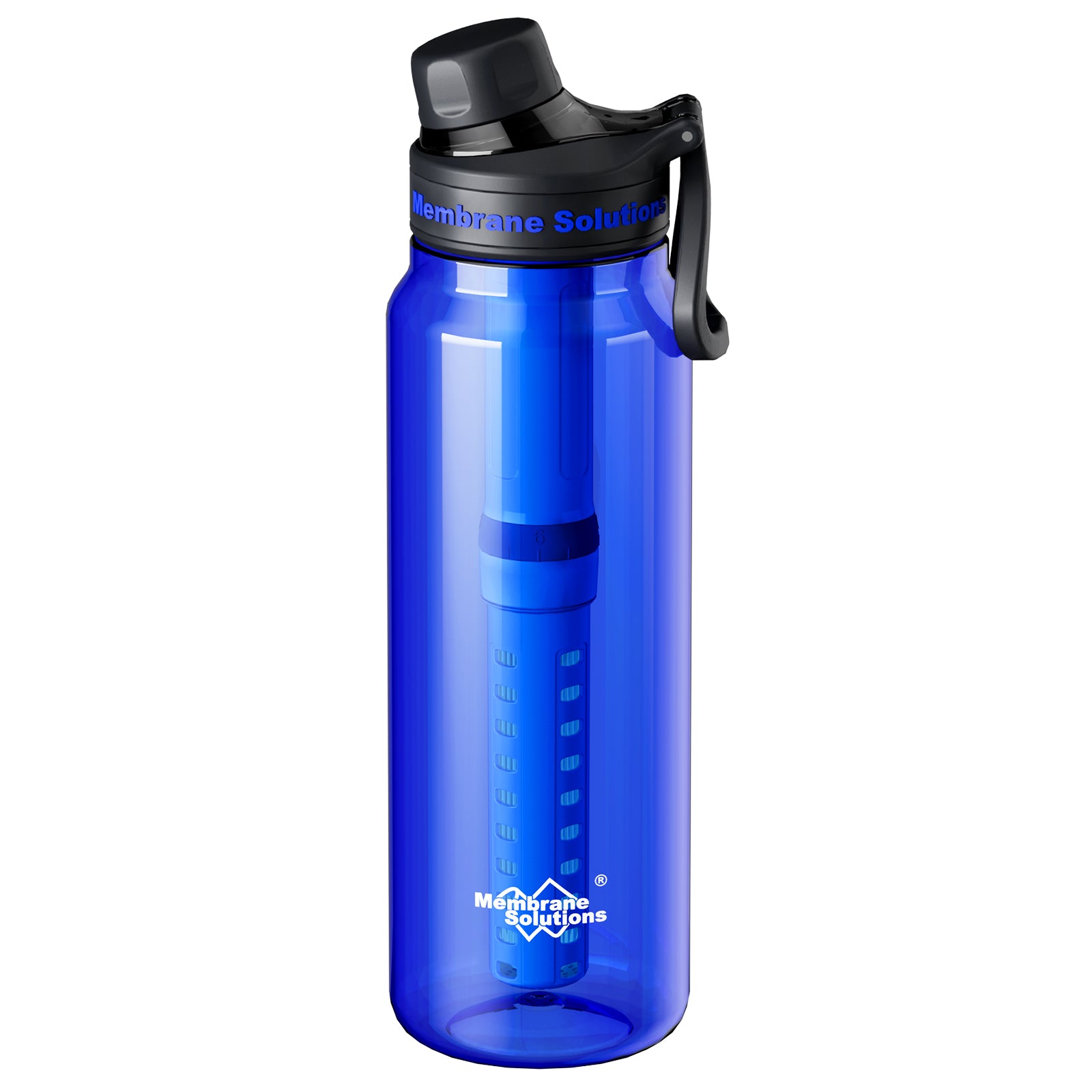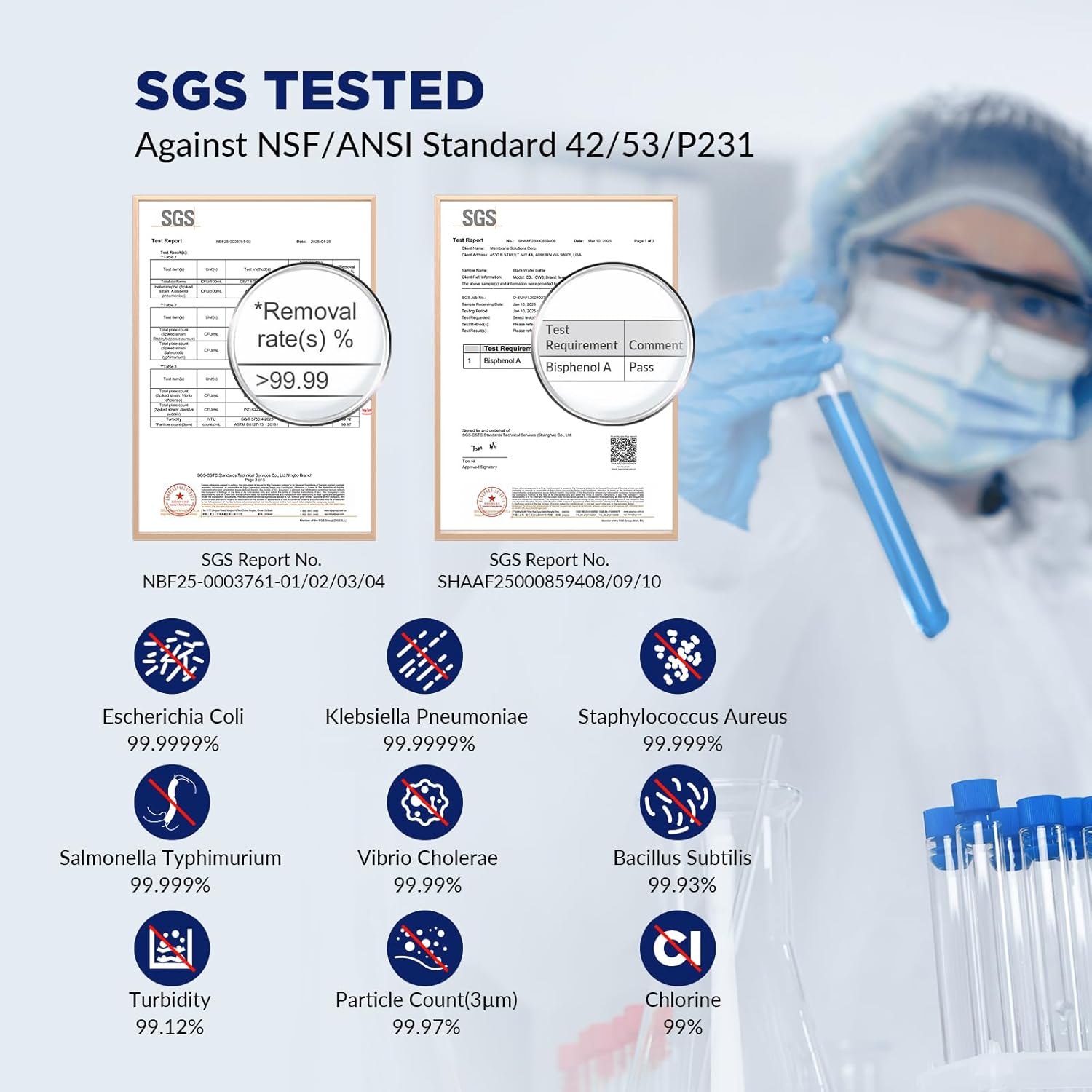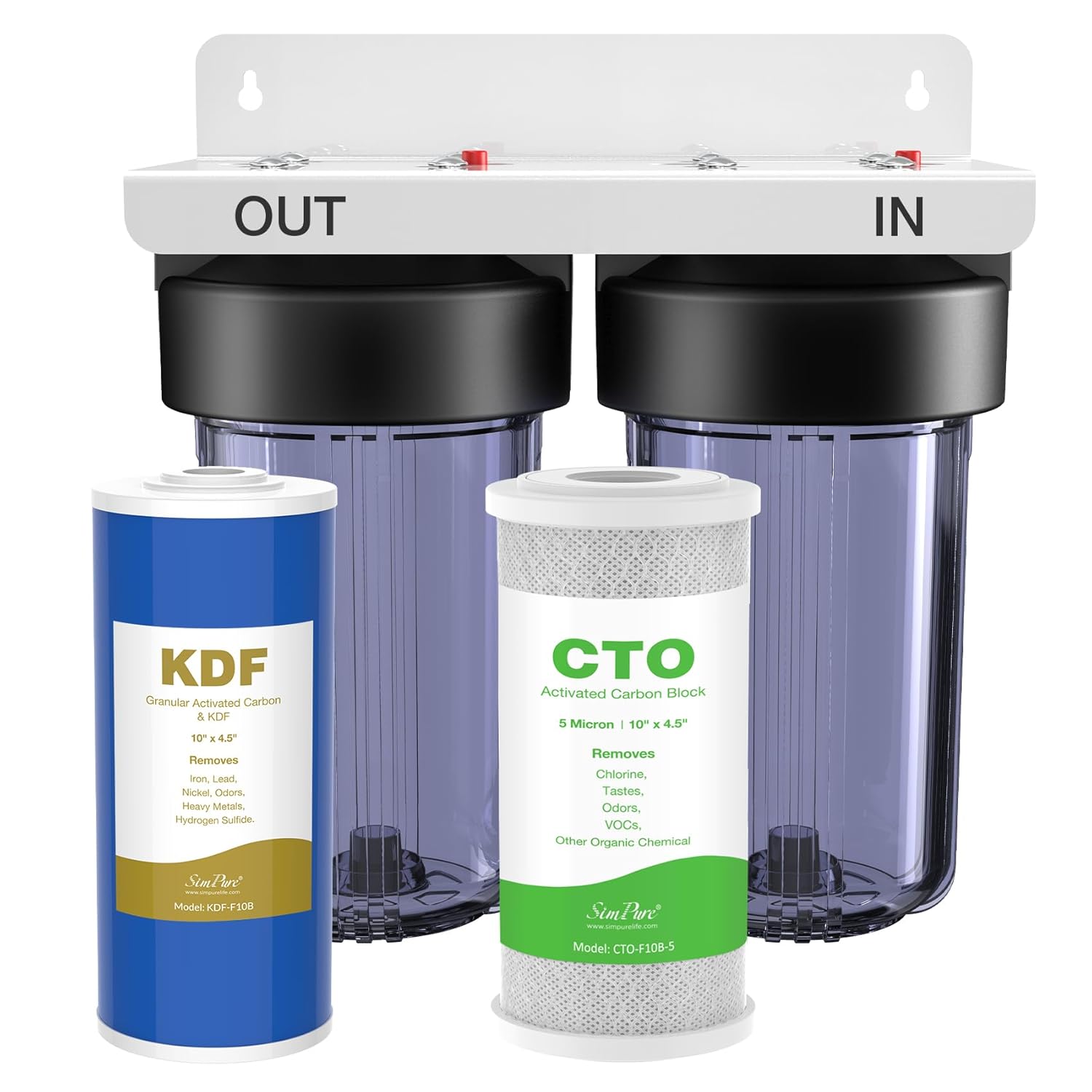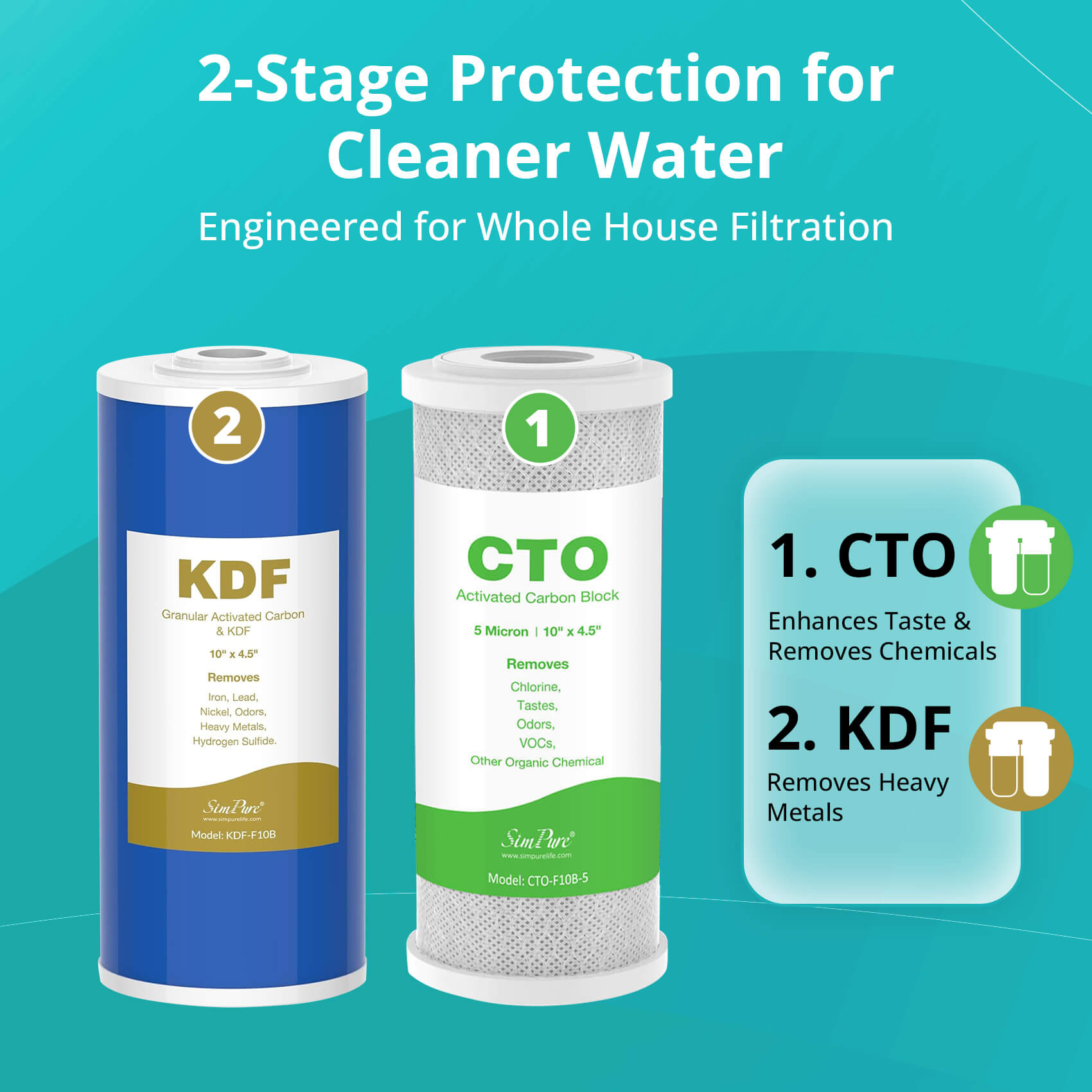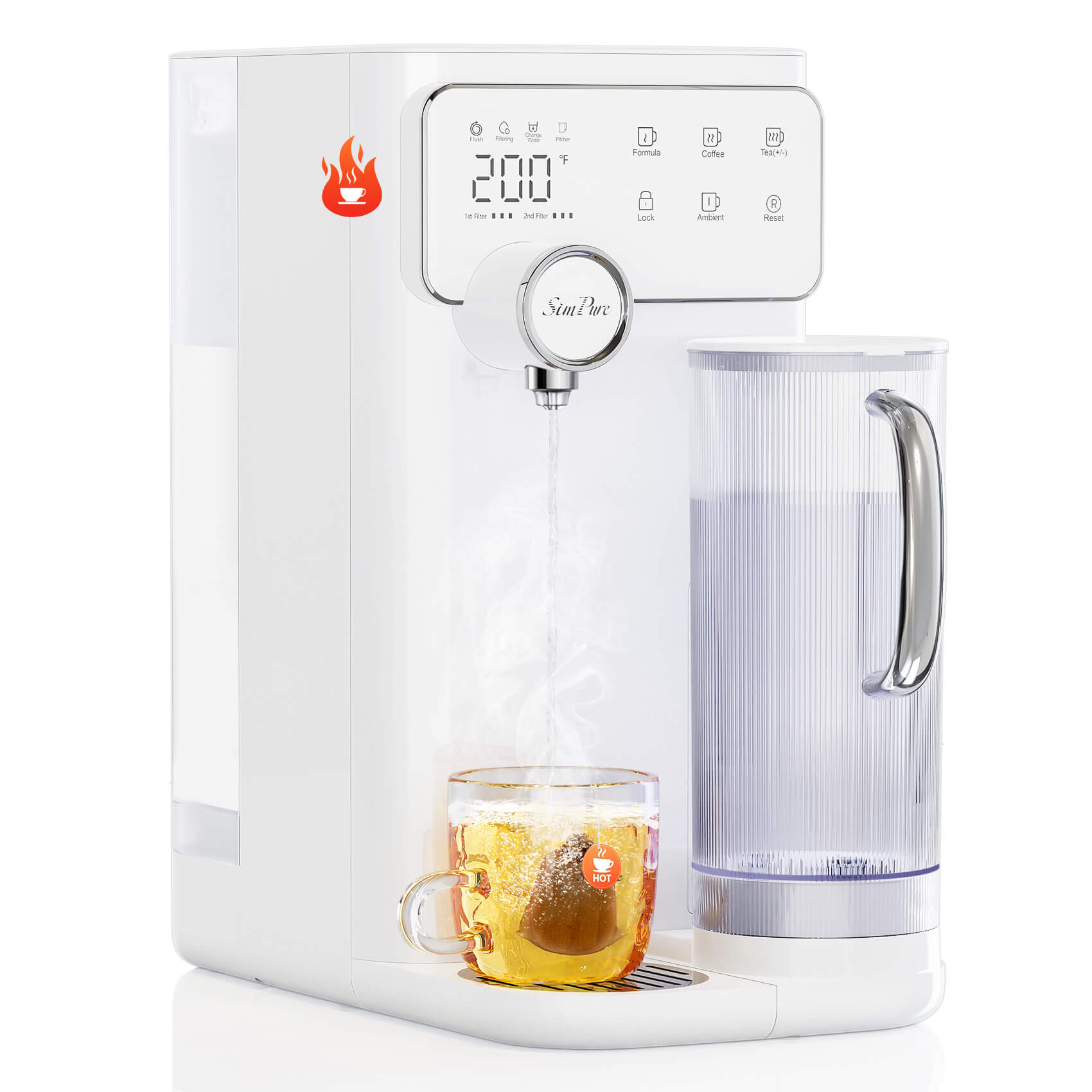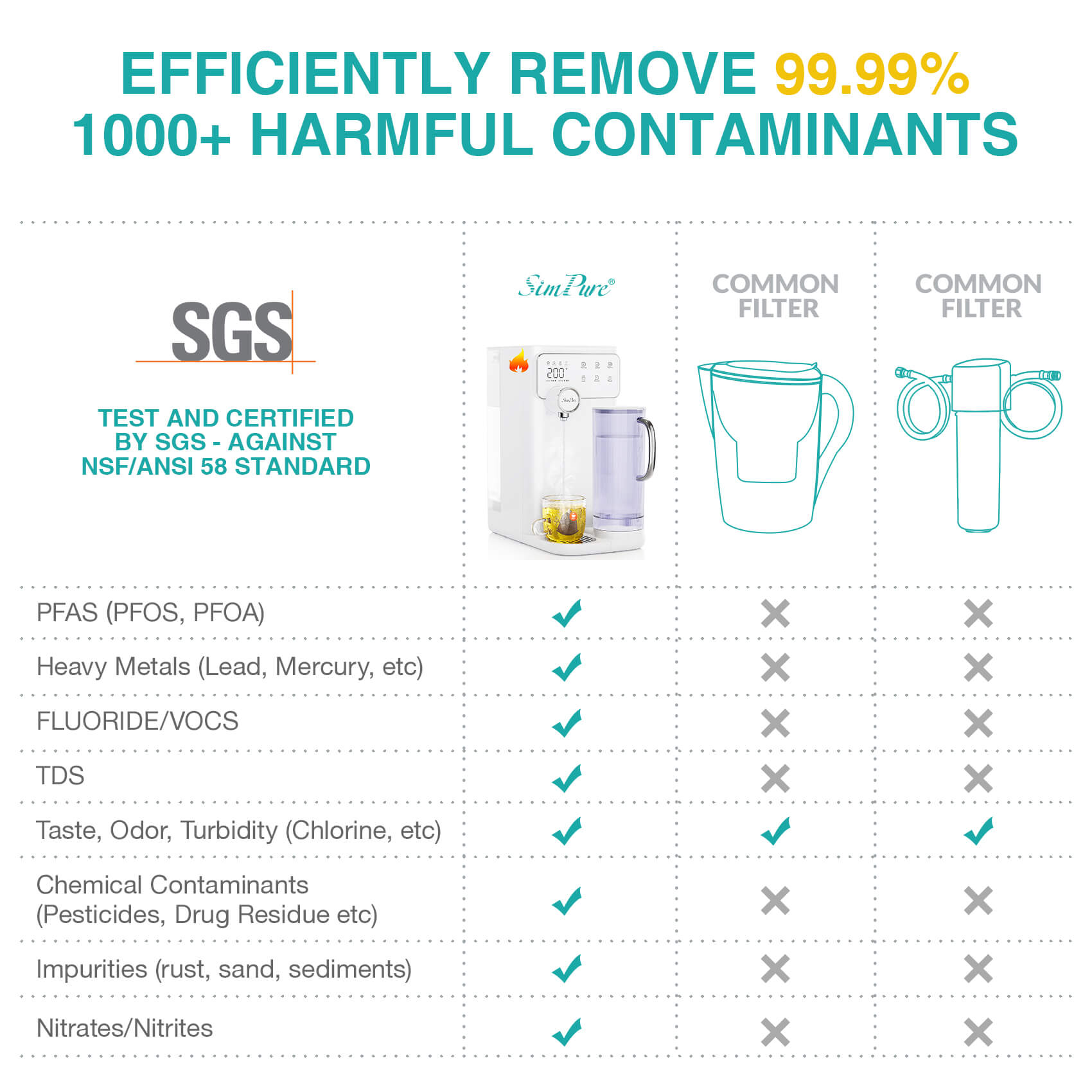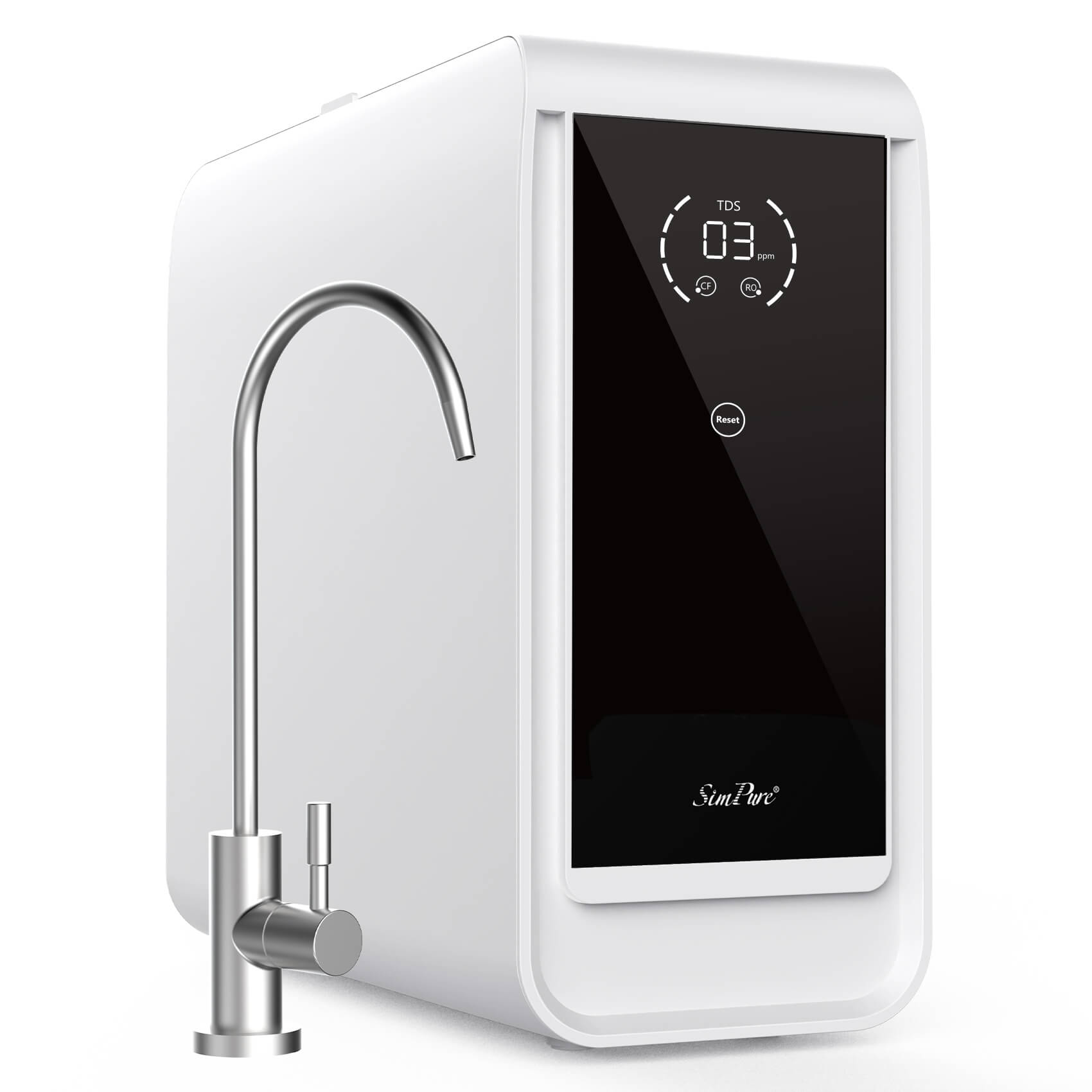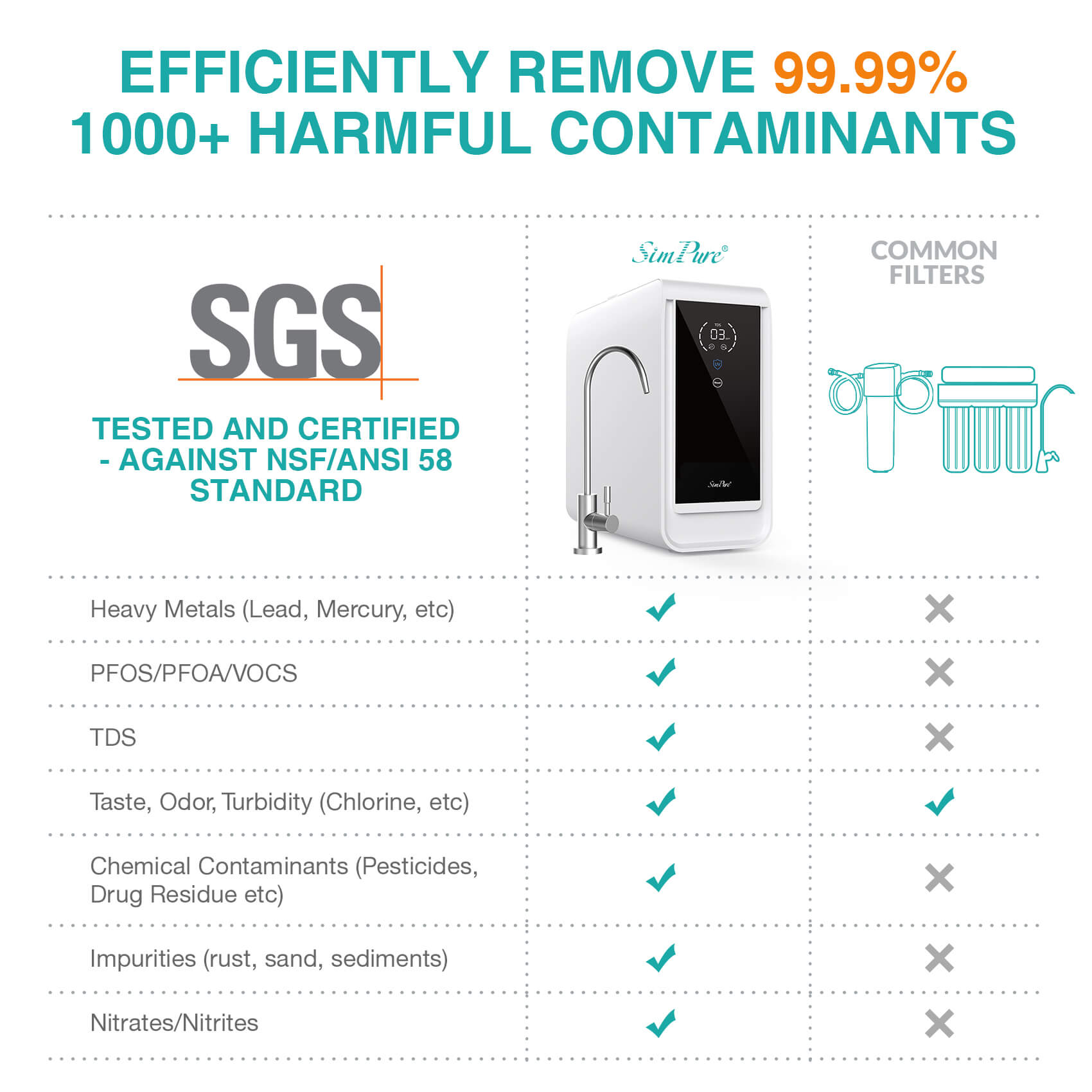Recent research has revealed alarming findings about the extent of plastic contamination in bottled water. Scientists now estimate that bottled water contains up to 100 times more tiny plastic particles than previously thought. This discovery has raised concerns about the potential health implications of consuming microplastics and nanoplastics through drinking water. Understanding the impact of these minuscule plastic fragments on human health is crucial, as they can enter our bodies through ingestion and potentially pose risks once inside.
So can you remove microplastics from drinking water? One potential solution that has gained popularity for its effectiveness is reverse osmosis. Then does reverse osmosis remove microplastics? This advanced filtration method promises to significantly reduce the presence of microplastics in our drinking water, offering a clearer, safer drinking experience. In this article, we'll delve into how reverse osmosis systems work and whether they truly can filter out microplastics effectively, providing you with the clean water you strive for.
Table of Contents
Are Microplastics in Drinking Water Harmful?
What Are 3 Types of Microplastics Found in Water Pollution?
Does Reverse Osmosis Remove Microplastics?
What Are Microplastics?
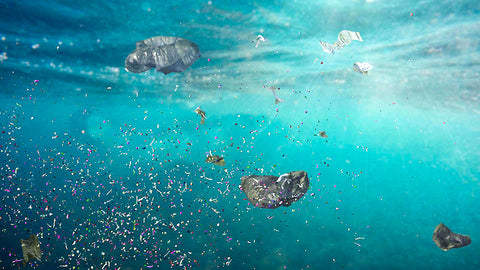
Microplastics are minuscule plastic particles measuring less than 5 millimeters in length, making them barely visible to the naked eye. They can originate from various sources, including the breakdown of larger plastic items or the direct release of tiny plastic beads used in cosmetics or industrial processes. Microplastics are pervasive in the environment, found in oceans, freshwater bodies, soil, and even the air we breathe. Due to their small size, they can be ingested by marine life and subsequently enter the food chain, posing potential risks to ecosystems and human health.
Are Microplastics in Drinking Water Harmful?
Yes, microplastics in drinking water can potentially be harmful, although the full extent of their health impact is still being studied. Here are some specific potential harms associated with microplastics in drinking water:
1. Ingestion: When consumed, microplastics can accumulate in the digestive tract, potentially causing irritation, inflammation, and obstruction in severe cases.
2. Toxic Chemicals: Microplastics can absorb and release toxic chemicals such as persistent organic pollutants (POPs) and heavy metals. These chemicals can leach into the body upon ingestion, leading to adverse health effects.
3. Disruption of Gut Microbiota: Microplastics may alter the composition and function of gut microbiota, which can affect digestion, immune function, and overall health.
4. Organ Accumulation: Studies suggest that microplastics can translocate from the digestive system into organs such as the liver, kidneys, and even the brain, potentially causing organ damage over time.
5. Endocrine Disruption: Some microplastics contain additives like phthalates and bisphenols, which are known endocrine disruptors linked to hormonal imbalances and reproductive issues.
What Are 3 Types of Microplastics Found in Water Pollution?
Microplastics found in water pollution come in various forms, categorized by their size and origin. Here are three types commonly found:
Primary Microplastics (0.1-5 mm): These are intentionally manufactured small plastic particles used in personal care products like exfoliants or in industrial abrasives. They enter water bodies directly.
Secondary Microplastics (5 mm - 1 µm): These are fragments resulting from the breakdown of larger plastic items like bottles or packaging. UV light, mechanical abrasion, and chemical processes contribute to their formation.
Nanoplastics (<1 µm): These are ultra-small plastic particles, often the result of further degradation of secondary microplastics or direct release from products like textiles or coatings. Their small size allows them to penetrate tissues and organisms more readily, raising concerns about their potential impact on ecosystems and health.
Does Reverse Osmosis Remove Microplastics?

With RO technology being one of the most advanced methods in water filtration, many people asked that, does RO effectively remove microplastics from our drinking water? Let's delve into the capabilities of reverse osmosis systems and explore their impact on microplastic removal.
-Effectiveness of RO in Microplastic Removal
When it comes to the effectiveness of reverse osmosis in removing microplastics from water, it's crucial to consider the types of microplastics commonly found in water pollution.
Primary Microplastics: RO systems are highly effective in removing primary microplastics, which are intentionally manufactured small plastic particles. The fine filtration capability of RO membranes allows them to capture these particles effectively, ensuring that they are not passed into the treated water.
Secondary Microplastics: RO technology is also efficient in removing secondary microplastics, which are fragments from the breakdown of larger plastic items. The small pore size of RO membranes prevents these particles from passing through, contributing to cleaner water output.
Nanoplastics: Although nanoplastics are extremely small, RO systems can still capture a significant portion of these ultra-small plastic particles. While some nanoplastics may be smaller than the pores of RO membranes, the overall effectiveness of RO in removing microplastics, including nanoplastics, is substantial.
To be concluded, for the doubt does RO remove microplastics, we can clear that reverse osmosis is a highly effective method in microplastic removal from water, addressing primary, secondary, and nanoplastic contaminants with its advanced filtration technology.
-Comparing RO with Other Filtration Methods
When comparing reverse osmosis with other filtration methods, several factors come into play. RO stands out for its high microplastic removal efficiency, making it a preferred choice for ensuring water purity. However, it comes with moderate to high costs and requires regular maintenance, including filter changes and membrane replacements. Here are some other methods you can consider with each pros and cons. [We still recommend RO systems for microplastics removal! ]
1. Activated Carbon Filters
Pros:
Effective in removing chlorine, odors, and some organic compounds.
Simple installation and low initial cost.
Suitable for improving taste and odor in water.
Cons:
Limited in removing dissolved minerals and salts.
May require frequent filter replacements for optimal performance.
Less effective for removing microplastics and certain contaminants.
Start Rating: 3.5/5
2. UV Disinfection Systems
Pros:
Kills bacteria, viruses, and other microorganisms effectively.
Chemical-free process, environmentally friendly.
Low maintenance once installed.
Cons:
Does not remove particles or dissolved solids.
Requires clear water for optimal effectiveness.
Initial cost and electricity consumption.
Start Rating: 4/5
3. Sediment Filters
Pros:
Effective in removing larger particles and sediment.
Improves water clarity and reduces turbidity.
Low cost and easy maintenance.
Cons:
Limited in removing dissolved contaminants.
May require frequent replacements in areas with heavy sediment.
Not suitable for microplastic removal.
Start Rating: 3/5
4. Ultrafiltration (UF)
Pros:
Effective in removing larger particles, bacteria, and some viruses.
Improves water clarity and reduces turbidity.
Energy-efficient compared to some other methods.
Cons:
Limited in removing dissolved contaminants and smaller particles.
Requires periodic membrane cleaning and maintenance.
Initial cost and membrane replacement expenses.
Start Rating: 3.5/5
5. Distillation
Pros:
High removal efficiency for many contaminants, including heavy metals.
Produces purified water without the need for chemicals.
Long-lasting equipment with minimal maintenance.
Cons:
Slow process and lower water output.
Requires energy consumption, potentially high operating costs.
Not effective for volatile organic compounds.
Start Rating: 4/5
6. Ion Exchange Filters
Pros:
Removes specific ions like calcium and magnesium.
Softens water and reduces scale buildup.
Suitable for improving water taste and reducing hardness.
Cons:
Limited in removing all contaminants, including microplastics.
Requires regular regeneration and replacement of ion exchange media.
May increase sodium content in water.
Start Rating: 3.5/5
General Steps to Install an RO System
Follow these steps to install an RO system for removing microplastic:
1. Choose a suitable location near water source and power outlet.
For countertop RO systems, select a spot close to the kitchen sink for easy access to water. Ensure there's enough space for the system and its components.
For undersink RO systems, choose a location under the sink near the water supply line and power outlet. Consider accessibility for maintenance and ensure adequate space for installation and filter changes. Here we recommend you try our SimPure Q3-600 Tankless RO system!
2. Install the pre-filters and connect them to the main system.

Install pre-filters, such as sediment and carbon filters, in designated housings. Follow manufacturer instructions for proper placement and alignment. Connect the pre-filter housings to the main RO system using provided tubing and fittings.
3. Connect the RO membrane and storage tank according to instructions.
Connect the RO membrane and storage tank as per the manufacturer's instructions. For systems with a storage tank, attach the membrane to the tank and connect the tank to the main system. Follow the designated tubing paths and securely fasten all connections to prevent leaks.
For tankless RO systems, connect the membrane directly to the main filtration unit without a storage tank, ensuring proper alignment and secure fittings for efficient water flow and filtration.
4. Set up the faucet for filtered water dispensing.
Install the dedicated faucet provided with the RO system on your sink countertop or kitchen space. Ensure the faucet is securely connected to the system's output line. Position it conveniently for easy access to filtered water. Test the faucet to ensure proper functionality and check for any leaks before regular use.
5. Flush the system to remove any air bubbles and contaminants.
After installation, flushing the RO system is crucial to eliminate air bubbles and residual contaminants. This process ensures optimal performance and water quality. Follow the manufacturer's instructions to initiate the flushing procedure, typically involving running water through the system for a specified duration. Once complete, the system is ready to provide clean, filtered water for consumption.
RO Maintenance Tips for Optimal Performance
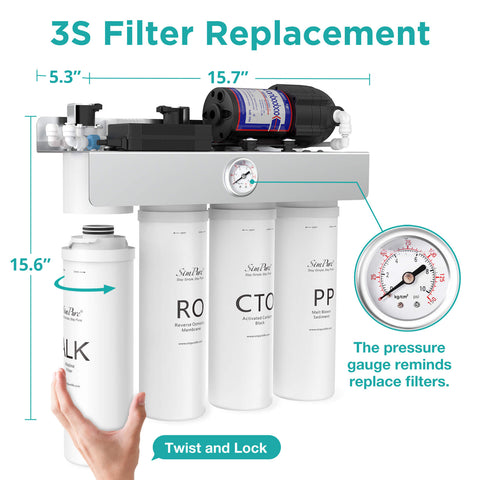
- Replace RO membrane annually for consistent filtration effectiveness [based on usage].
- Change pre-filters every 3-6 months to maintain water quality.
- Clean storage tank regularly to prevent bacterial growth.
- Check for leaks or drips and repair promptly.
- Monitor water pressure for optimal RO system performance.
- Test water quality periodically for contaminants.
- Keep RO system components free from debris and buildup.
- Inspect faucet for proper functioning and leaks.
- Use manufacturer-recommended cleaning solutions for system maintenance.
In conclusion, reverse osmosis has proven to be an effective method for removing microplastics from water. For those considering installing an RO system, SimPure offers a range of advanced options, including countertop and under-sink models in both tank and tankless configurations. With SimPure's advanced technology, you can enjoy clean water for drinking and cooking, as well as fresh air to breathe, free from harmful substances and contaminants. Click the picture below to explore SimPure offerings!
